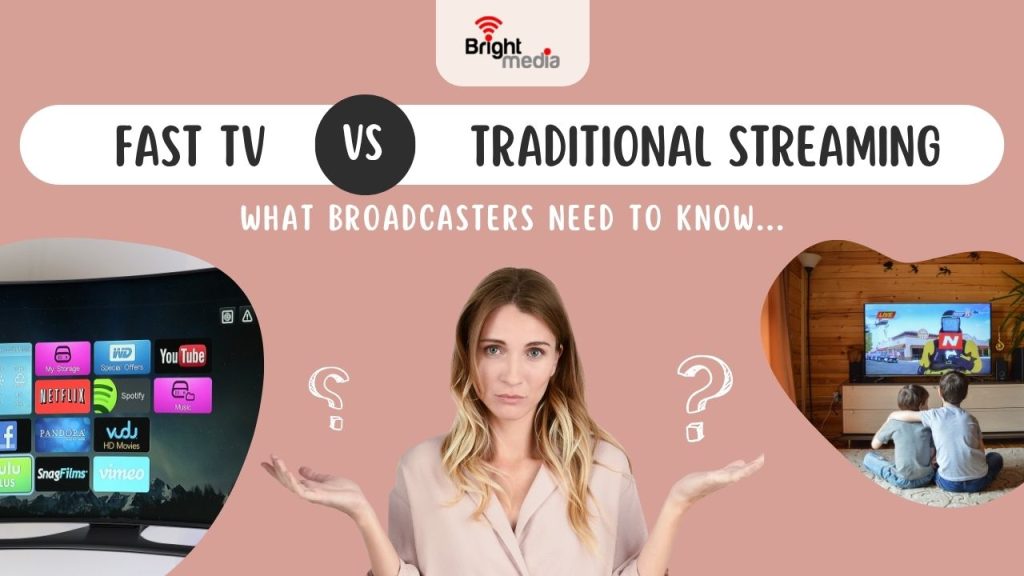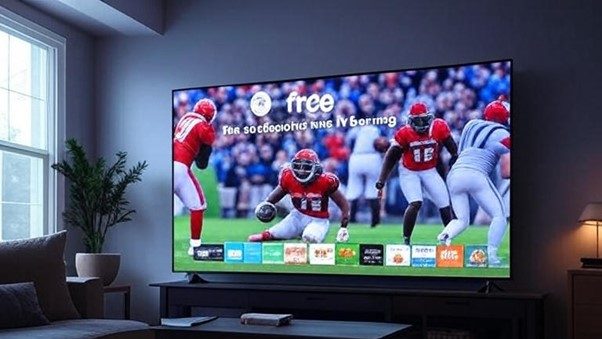
FAST TV vs Traditional Streaming: What Broadcasters Need to Know
As audience behaviour is constantly changing, broadcasters are looking for smart, scalable, profitable ways to deliver distribution models. Two of the biggest options – FAST (Free Ad Supported Streaming TV) and traditional subscription-based streaming – have changed the game for broadcasters to deliver content. But what is behind them, what are the differences, and how should broadcasters revamp their model? Here is what BOSS Studio thinks you need to know.
Also read – The Role of Cloud Technology in Broadcast Scheduling
What is FAST TV?

FAST channels provide scheduled, linear-like television content online—for free—monetized through advertising. It is like a digital version of cable Television, but delivered via OTT (over-the-top) technology, based upon the monetization model of broadcast.
Also read – The Rise of FAST TV: What It Means for Content Owners
Traditional Streaming in Contrast

Traditional subscription services (SVOD) and an occasional transactional video-on-demand option (TVOD) offer users to have full freedom to decide what to watch and when to watch. They offer ad-free viewing experiences for a monthly fee, and traditional streaming platforms like Netflix, Prime Video, etc.
Also read – The Business of Streaming: How OTT Software Maximizes Revenue
Key Differences for Broadcasters
| Feature | FAST TV | Traditional Streaming |
| Revenue Model | Ad-supported (AVOD) | Subscription or pay-per-view |
| Content Format | Linear, schedule-based | On-demand |
| User Access | Free with ads | Paid |
| Discovery | Easier channel-surfing | Search-based |
| Cost to Viewers | Zero | Monthly/transactional fees |
Why FAST TV Is Gaining Traction

- Cord-cutters love it: Viewers want free, lean-back experiences again.
- Advertisers are paying attention: AVOD, with its targeting ad tech, can be profitable.
- Easily scalable: With tools like BOSS Studio, launching curated FAST Channels at scale becomes effortless.
Also read – How Radio Broadcast Software is Transforming Station Management
What Broadcasters Should Do Next

To remain relevant, broadcasters need a hybrid strategy. FAST TV can augment existing OTT platforms by providing smaller or repurposed content to new audiences while leaving premium SVOD content alone.
With platforms like BOSS Studio, broadcasters can:
- Launch and manage FAST channels quickly
- Schedule and monetize content with built-in traffic and ad tools
- Maintain creative and brand control
Also read – How to Choose the Right OTT CMS for Your Platform
Conclusion
In today’s fragmented viewing environment, broadcasters are not choosing between FAST TV or traditional streaming; they want both to maximize their reach and revenue. BOSS Studio broadcasters have the integrated ability to manage linear FAST channels and on-demand libraries all from one platform. Whether monetizing through advertising or subscriptions, they don’t need to choose between the two. BOSS Studio allows broadcasters to continue to respond dynamically, offer different viewing experiences, and seamlessly grow their content strategy. The future is not either/or—it’s smart, flexible, and powered by BOSS Studio!
